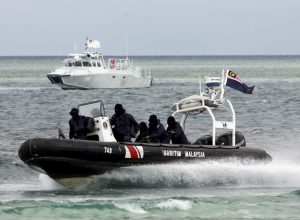When an Asian maritime crime monitor recently announced that piracy in the Malacca Strait had increased in May, experts joked that the “economic sector” had fully reopened, in reference to the global shutdown in light of the coronavirus pandemic and present steps toward “reopening.”
In fact, during the pandemic piracy never ceased in the vital waterway. Neither did it stop in the Sulu Sea, a body of water northeast of Borneo, shared by Malaysia and the Philippines.
The Sulu Sea has always been a hotspot for kidnapping and ship hijacking. It is said that such acts and their many variants by different actors occurred as early as the 16th century, against the Spanish during their colonization of the Philippines. Because of the long-running war between the Moro people and Spain – and subsequent conflicts in the same space – piracy in the Sulu Sea and its surrounding areas went unsuppressed until the 20th century.
After World War II, piracy continued. The wide availability of military surplus hardware and firearms contributed to a worsening security situation. Piracy received an additional boost as the Moro National Liberation Front (MNLF) and Moro Islamic Liberation Front (MILF), founded in the 1970s, resorted to maritime crime to finance their armed insurgencies. Transborder crimes have been occuring in the Sulu Sea ever since.
To Malaysians, and perhaps many other people as well, several modern major maritime crimes come quickly to mind: the 1985 attack by Filipino pirates on the town of Lahad Datu on the east coast of the Malaysian Borneo state of Sabah that killed 21 people; and also the 2000 kidnapping of Malaysians and Western holidaymakers by the Filipino criminal group known as the Abu Sayyaf, which drew huge international attention.
But the most infamous incident is arguably the 2013 incursion of Lahad Datu by hundreds of militants from the so-called Royal Sulu Force, who had travelled through the Sulu Sea undetected to lay their territorial claim over parts of Sabah. That resulted in a months-long bloody standoff with Malaysian security forces.
After the incident, the Malaysian government created a police-led multiagency command called the Eastern Sabah Security Command (ESSCOM) to beef up security in the Malaysian part of the Sulu Sea and the surrounding land areas, which were also designated as the Eastern Sabah Security Zone (ESSZONE).
The command has claimed that piracy incidents were reduced after its formation. Statistics show the scourge persists, despite smaller numbers.

































